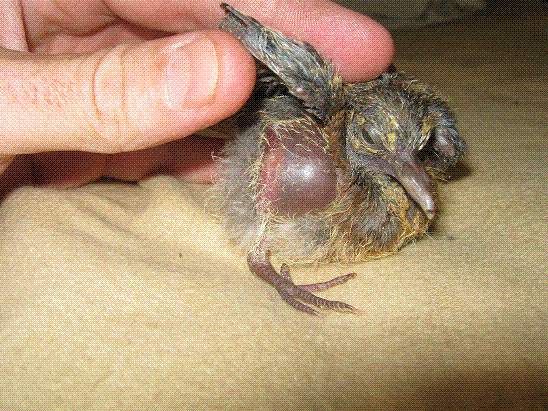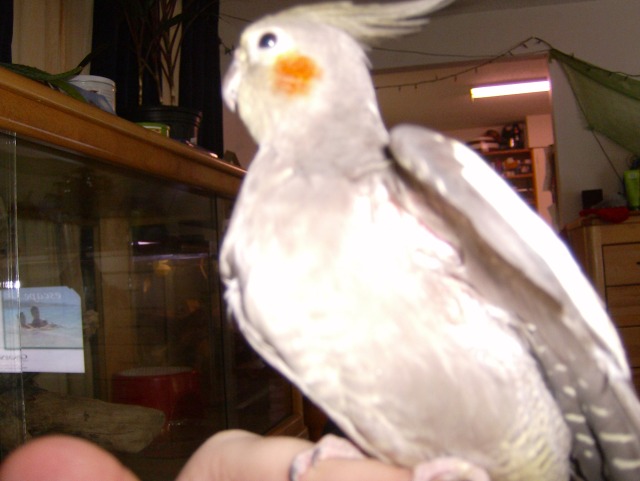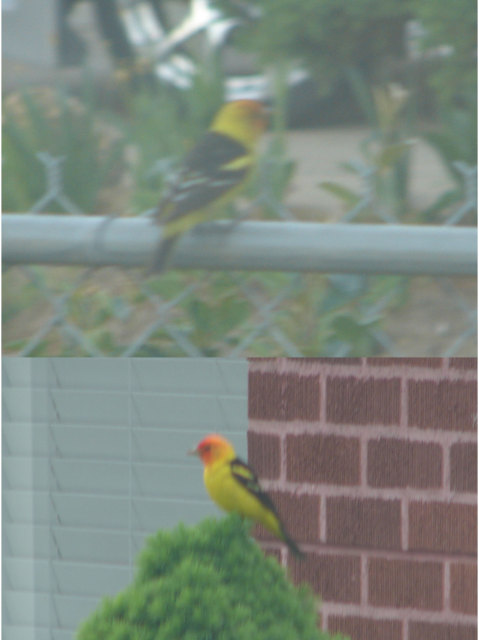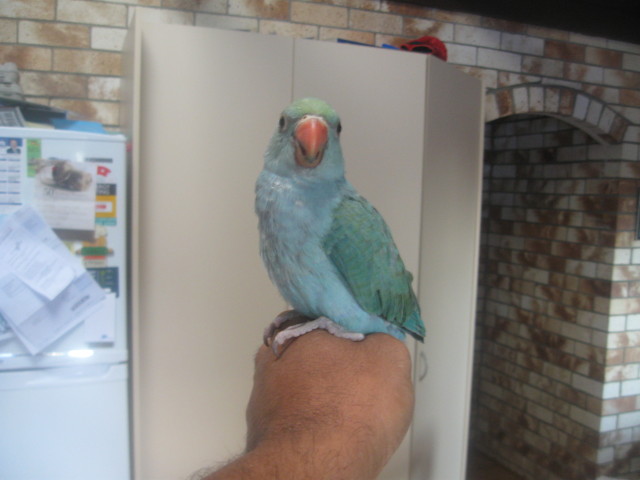QuestionI have a hand reared cockatiel 10yrs old I dont know sex, it is very lemon in colour with vivid orange cheeks, he has always had a mirror in cage but never took any notice of it really. for last 2 weeks he has chatted in to the mirror constantly and also has taken to shredding the sandpaper in bottom of cadge when I change it a lot of the paper seems to be missing, is he eating it as he has never nibbled more than a corner before and I do give him bird grit.
AnswerHi, Heather. I found your question in the question pool this morning. Sounds like your tiel might be exhibiting some nesting/breeding behavior. It's a little early in the breeding year, but if environmental conditions in the bird's environment are right, it's hormones may have started "racing" already (parrots can breed year round if their environmental conditions are right). The shredding of the sandpaper could be the beginning of nesting behavior, as well as the sudden notice of the bird imagine in your bird's mirror. A bird cannot tell the difference between a bird image seen in a mirror and a real live bird! In other words, your tiel thinks the bird in the mirror is a real bird! With hormones racing, your bird is most likely going through the motions of nest building.
Some information on grit and use of sandpaper - Parrots do not need to consume grit because they hull their seeds/food (the inside of a seed is soft). Only birds who consume their seed/grain whole (without hulling it) require grit (such as pigeons, doves, etc.). In fact, it can be dangerous to their gastrointestinal system for parrots to ingest grit as grit can become impacted in their crop. This can require surgery to correct. They cannot digest grit. Use of sandpaper in the bottom of the cage serves the same purpose as feeding grit...your bird is most likely eating the sandpaper. This is not good. In addition,the use of sandpaper can be harmful to a bird's feet, i.e., walking/perching on it can result in sores on the feet. I recommend you do not use sandpaper as a cage substrate, or around your bird's perches, and I also highly recommend that you do not feed grit. Your tiel simply doesn't need grit at all. There are many types of substrate on the market you can use in your bird's cage bottom besides sandpaper. Black and white newspaper suffices nicely and allows you to monitor your bird's droppings.
Birds prefer other birds to humans in most cases. As a result, you may want to consider whether you should remove the mirror in your bird's cage. This depends on what type of relationship you have and want with your bird. Your bird can become bonded to the bird in the mirror and no longer need your companionship. In other words, if you have a friendly relationship with your bird where your bird enjoys your company and vice versa, the bird in the mirror can become a threat to you and your bird's relationship. However, if your bird has always had the mirror and interacted with the bird in the mirror and still maintained a friendly relationship with you, you wouldn't have to change anything. Be aware though that during breeding season when the bird's hormones are running rampant, your tiel might prefer the bird in the mirror to you, then revert back after the hormones tame down.
I'm going to take a stab at determining the sex of your tiel based on your description in your post. You state your tiel is lemony in color with vivid orange cheek patches. Can I assume your tiel is a lutino tiel (mostly white bird)? If your tiel is mostly white with yellow hues on it's back and/or in it's wing feather, this is most likely a female bird. Male lutinos don't normally have the yellow hues; they are all white. "Vivid" orange cheek patches on a lutino are hard to discern unless you have other orange-cheeked tiels to compare it with. I have some female lutinos who have just as vivid cheek patches as the males. Male lutinos can have a bald spot on top of their heads (genetic characteristic). Male tiels in general have a beautiful song, whereas female tiels rarely do more than just chirp. Male tiels generally ready a nesting site before allowing the female to enter the nest. Males will try to mate with objects in their cage if a female is not available, so watch your bird's behavior with the bird in the mirror in order to help you determine your bird's sex.
I hope the above helps.
Chrys

 Baby Pigeon
Question
Cosmo
Hi Roger
We picked up a baby pigeon, ap
Baby Pigeon
Question
Cosmo
Hi Roger
We picked up a baby pigeon, ap
 Eggs! :(
QuestionBroken Egg
QUESTION: I understand lovebi
Eggs! :(
QuestionBroken Egg
QUESTION: I understand lovebi
 my cockitale mocha
QuestionQUESTION: I have a cokitale that will be 3 on A
my cockitale mocha
QuestionQUESTION: I have a cokitale that will be 3 on A
 Wild or Domestic?
Question
Pretty Birds
There are these three birds in my
Wild or Domestic?
Question
Pretty Birds
There are these three birds in my
 Color of my indian ringneck
Question
Boots
I have an eleven week old male ringneck
Color of my indian ringneck
Question
Boots
I have an eleven week old male ringneck